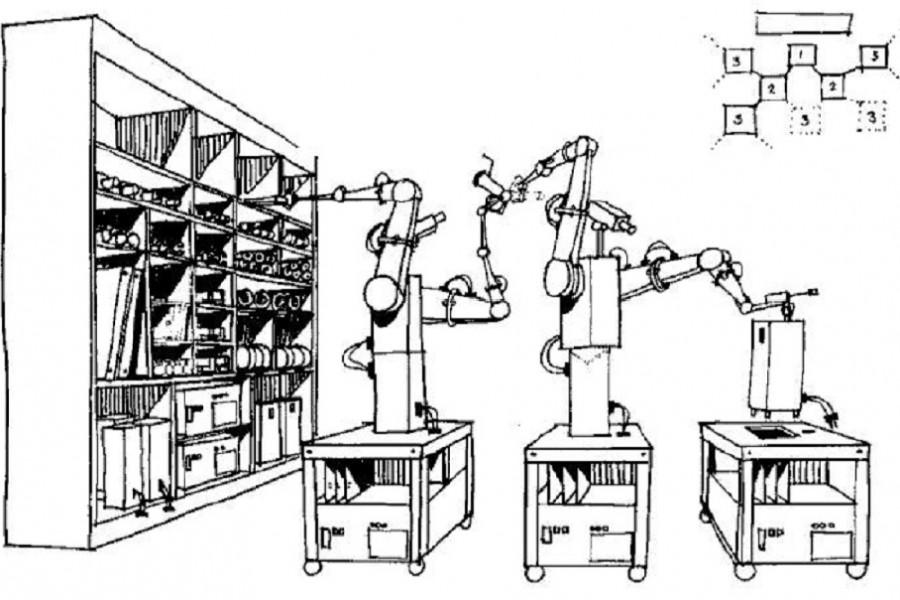
Published :
Updated :

Scientists at long last have been able to develop a biological machine that can not only self-replicate, but also 'give birth to' babies! The feat has been achieved by scientists at the University of Vermont, Tufts University and the Harvard University in the USA.
The news is at the same time hilarious and frightening. Since when humans began making machines as their aid to do tasks, they became fearful if machines someday might surpass them. But machines have indeed surpassed humans in many ways. But those machines still serve us as slaves. But could machines at some point of time challenge human intellect, the hallmark of our superiority over every other creature on Earth? With the invention of computer, that fear of our intellect being challenged by machines increased. The same old fear of building a Frankenstein that can surpass, even destroy, its creator is there. But computers so far has remained an aid to our brain, just like a weight-lifting crane acts like human muscle though many times more powerful. But can a machine, such as the computers can think? Or is it just an extension of the brain so far as it can perform a particular task as dictated by the programme set for it? The programme is after all made by humans. But artificial intelligence? A lot of progress has meanwhile been made in developing artificial intelligence. A fundamental feature of intellect is its ability to learn from doing a task and apply the learning in a new situation. For artificial intelligence, it is 'machine learning' that helps it to gather experience. A lot of progress has already been made in this field. Artificial Intelligence or AI is now being widely used in research, industry and business. Though it has proved to be a highly potential sector of human endeavour, even a scientist of professor of Stephen Hawking's calibre was against continuing the development of AI. He thought it might one day prove to be a real Frankenstein. But humans will never stop pushing the boundary. The creation of a new, self-replicating 'living machine' is yet another example of human curiosity to step into the unknown. What scientists at the University of Vermont, the Tufts University and the Harvard have done is not another feat of assembling mechanical parts, as in a computer, into a new form of machine that can make another copy of itself. They have done more than that. They have, with the help of AI, repurposed living cells of a kind of clawed African frog (Xenopus laevis) and assembled them into a new life form. Called Xenobot, it was first developed in 2020. The same group of scientists has now through trial and error and using evolutionary algorithm achieved this feat. The Xenobot, when it was developed last year, could only replicate itself-it could walk, swim, circle a target and heal itself if cut. In its latest form, it can even create a baby out of it. The baby Xenobot can then produce its own baby and the act goes on. Clearly, it is a spontaneous process of creating life-like forms, but not by nature. It is a kind of reproduction that does not follow the principle that nature follows (so far as we know, to be fair). What does really happen? The parent Xenobot is made up of 3,000 cells from a frog embryo. Under natural condition, these cells would grow into frog skin. But in the laboratory, they are made to form a sphere. The assemblage of 3,000 cells, the parent Xenobot, can beget children. However, the system is not sustainable as it normally dies out after giving birth to such children. So, what did the scientists working on the Deep Green supercomputer cluster at the University of Vermont (UVM)'s Vermont Advanced Computing Core do? As noted in the foregoing, based on an AI-designed programme and evolutionary algorithm, the super computer tested billions of shape in simulation. The shapes so simulated were, for example, like, say, triangles, squares, pyramidal shape and suchlike. Finally, the scientists found the shape that allowed the cells to be more effective at what they say the motion-based 'kinematic' replication. The effort at computer-modelling of various random shapes went on for months. The shape that could do the magic of 'kinematic replication' was a Pac Man (the famous character of a video game) like one. According to Sam Kliegman, a lead researcher in the Xenobot project, the AI-designed shape was 'non-intuitive' and 'a human engineer would not have come up with' it. And it was this parent Xenobot that proved to be sustainable as it did not die out after completing only one cycle of reproduction. It behaved like real living creature that can give birth to generations of children. But the process of reproduction is quite different from what nature has been practicing thus far. Of course, it is an example of 'kinematic replication'. But scientists to date knew of 'kinematic replication' at the molecular level only. What they are confronted with here is replication of an entire cell-some 42 million protein molecules lie in a single cell (!). Now not just a cell, a whole organism is experiencing kinematic replication. But what is this discovery of a 'synthetic organism' for? The new biotechnology may help develop regenerative medicine. The synthetic organism, the Xenobot, can be directed to clear the clots in the body's veins that cause heart attack, attack and destroy cancer cells, heal birth defects and delay the process behind ageing. Science fiction? Scientists are playing god?
No, humans are on the verge of a new epoch of science. It is time we shrugged off all our worries about this new technology and embraced it.


 For all latest news, follow The Financial Express Google News channel.
For all latest news, follow The Financial Express Google News channel.